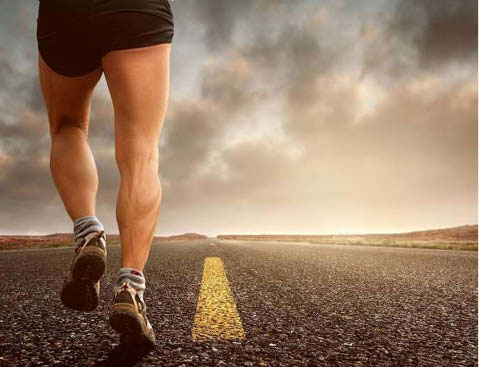THE angle at which a person leans their torso forward as they run affects their risk of injury, finds a study from the University of Colorado.
The feet hit the ground harder when people lean forward as they run. Leaning forward places stress on the hips, knees, legs, and feet that can lead to overuse issues.
Many people consider running to be an activity that occurs primarily from the waist down.
However, a new study from researchers at the University of Colorado in Denver has shown that the angle of a runner’s torso has a lot to do with how they run and their likelihood of injuries.
Leaning forward too far when running increases the chances of developing overuse injuries.
The study, which appears in the journal Human Movement Science, explores the effects of a runner’s trunk flexion, which is the angle at which they hold their torso as they run.
The researchers found that even small changes in trunk flexion can have a profound effect on the motion, or “kinematics,” of the lower limbs and how hard they hit the ground when running.
Despite running not obviously involving the trunk, arms, and head, these parts of the body constitute about 68% of its mass.
To test the effects of trunk flexion on running, the researchers had to devise an experimental scenario that made it possible to hold runners’ torsos at specific angles without impeding their ability to run.
“We had to create a way,” says lead author Anna Warrener, Ph.D., “in which we could reasonably force someone into a forward lean that didn’t make them so uncomfortable that they changed everything about their gait.”
The researchers found that having a lightweight, plastic dowel behind treadmill runners’ heads caused them to lean forward to avoid hitting it.
The higher the position of the dowel, the less the runners ducked out of its way, and the straighter their trunk flexion. As the researchers lowered the dowel, the runners leaned forward more.
The researchers recruited recreational runners with no injuries, ranging in age from 18 to 23 years. Each individual ran brief 15-second trials at 3 meters per second.
They performed trials at their preferred trunk flexion and trials tilting forward at three angles that the researchers specified: 10, 20, and 30 degrees.
“We thought,” reports Dr. Warrener, “that the more you lean forward, your leg would need to extend further to keep your body mass from falling outside the support area. As a result, overstride and stride frequency would go up.”










